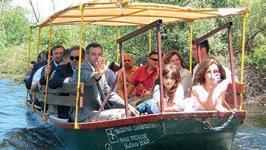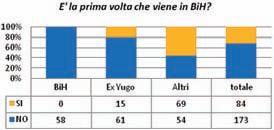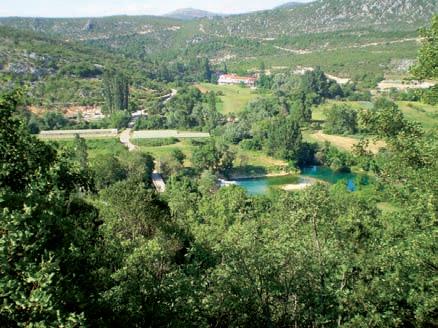
22 minute read
TOURISM IN “SUTJESKA” NATIONAL PARK
uary (-4.5°C) and February (-2.9°C) on Čemerno. e hottest months are July and August with the temperature of +18°C measured in Suha and +14.9° on Čemerno. e absolute minimal temperature descends to -22°C, while the absolute maximal temperature reaches +30°C. Due to constant collision of the warm Mediterranean and harsh alpine climate above this area, precipitation, in the form of rainfall and snow, is frequent and abundant and equally distributed throughout the year. e mean annual amount of precipitation measured at Suha is 1,428mm and 1,527mm at Čemerno.
Advertisement
“Zelengora” hunting grounds sprawl across 53.240 ha on one of the most attractive locations in BiH. e hunting ground, managed by Sutjeska National Park, serves for breeding, protection and planned kill of wild game: bear, wild-boar, roe-deer, chamois and grouse. e animal wildlife of the park is rich and diverse, from the numerous invertebrate species, especially the butter ies (Lepidoptera), over amphibians, reptiles and sh to 36 species and18 families of the mammals and a large number of bird species. e rivers of Sutjeska, Hrčavka and Jabušnica, as well as some lakes on Mt Zelengora, are rich in sh, especially brook trout, due which shing in the Park is a genuine pleasure for all enthusiasts of this sport.
Boundaries of Sutjeska National Park
e Park lies within the municipal boundaries of Foča and Gacko, on the surface of 17,350 ha and encompasses the Sutjeska protected area, the Perućica reserve and parts of the mountains of Maglić, Volujak and Zelengora.



Mountains and Lakes
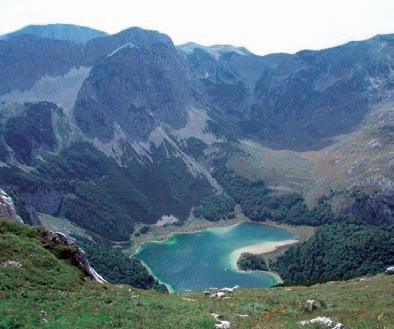

As mentioned before, the area of Sutjeska National Park is a mountainous region of corresponding strongly pronounced geomorphological characteristics. e mountain tops of Maglić and Volujak are already said to exhibit such characteristics, but they are only a part of the fascinating landscape that can be seen on many other mountain tops. As if in a magical succession, the mountains follow one a er the other: Vučevo, Maglić, Volujak and Zelengora. e breathtaking mountain saddles of Prijeđel, Dragoš Sedlo, Prijevor and Čemerno connect them into one continuous mountain range. e area is characterized by numerous geomorphological and geological phenomena like caves, cirques and canyons. Every mountain in Sutjeska National park is unique and beautiful in its own peculiar way.
Vučevo - a wide mountain plateau surrounded from the three sides by the canyons of rivers Sutjeska, Drina and Piva, and by the staggering massive of Mt Maglić from the fourth side. An almost water scarce area, the plateau is nevertheless covered in thick woods, meadows and pastures. For centuries now, the plateau has been a dwelling place of local cattle-breeders during summer months, when their mountain cabins or “katuns” come to life and fertile pastures are overrun by ocks of sheep and herds of cows. A walk across Suva Gora and Hadžića Ravan over to Ždrijelo and Koritnik is energizing. Steep goat paths ascend from the deep canyons of the rivers of Piva, Drina and Sutjeska up to Mt Vučevo. If you don’t inch from taking such an exhausting walk, you will be rewarded with a magni cent view of the landscape whose beauty will forever be engraved in your memory.
Mt Maglić and Mt Volujak – impressive giants, full of steep, sturdy cli s and streaked in summer with patches of snow that never melts. is is a unique string of mountain tops, chasms and cirques, overgrown with mountain grassland. Seasoned climbers, who have seen the unpredictable nature of these mountains, know the irresistible power of their allure. However, they always warn the less experienced visitors, enchanted by the fantastic views of these mountains, of their dangerous and treacherous nature.
Mt Zelengora – considered by many as the most beautiful mountain of this region, spacious and immense, it is shrouded in green woods and pastures. Despite its many sharp staggering peaks (Vilinjak, Bregoč, Stog, Orlovac, Planinica, Klek, Uglješin vrh), Zelengora leaves the impression of a serene and tame mountain. It is a stark contrast to Mt Maglić

and Volujak, from which it is separated by the deep canyon of the Sutjeska River. e main attraction on Mt Zelengora are its “mountain eyes” – the eight clear glacial lakes situated below mountain tops: Gornje and Donje Bare, Orlovačko Lake, Kotlaničko Lake, Štirinsko Lake, Borilovačko Lake and Crno and Bijelo Lake, while, along the fringes of the vast meadows and pastures, glare the scattered white mountain cabins of the cattle-breeders. Every year from May to mid-September, thousands of sheep swarm Mt Zelengora’s lush pastures.
Perućica virgin forest has an extremely rich and diverse wildlife, which consists of the lush vegetation (phytocenosis and plant communities) and the bustling animal wildlife. Due to its location in the south of Europe (i.e. in the sub-Mediterranean and Mediterranean belt), during the ice-age, Perućica was an important refuge area. is accounts for the fact that a large number of thermophile species of the European northern and central region have survived in this area. As the ice-age encroached upon Perućica, its most elevated parts were covered with glaciers. Hence, the numerous remains of the glacial age (glacial cirques and lake beds, crags etc.) Lower parts of Perućica managed to escape the ice cover for at least a while, which accounts for the presence of refuge ora and vegetation in this area (Ostrya carpinifolia and its communities). (An excerpt from the presentation "Perućica – e Land of Magic"). e protected tree species in the part of the nature reserve under the strict regime of protection, in addition to beech, r and spruce, are subalpine beech, alpine maple, subalpine spruce and juniper and mountain grassland. Indeed, Perućica virgin forest, as well as the remaining section of the park, conceals a diverse vegetation wealth, including many endemic and rare herbal species. Another indication of the wealth of ora in Perućica is the fact that over 170 species of trees and shrubs and more than 1,000 species of herbaceous plants have been registered here. e research on the representation of moss and lichen species has begun only recently. For this reason, the area has been a real magnet for researchers from di erent scienti c disciplines for some time now.
Fauna
e animal wildlife of the park is rich and diverse. It includes a large number of species, from invertebrate, especially butter ies (Lepidoptera), over amphibians, reptiles and sh to 36 species and18 families of mammals and numerous bird species.

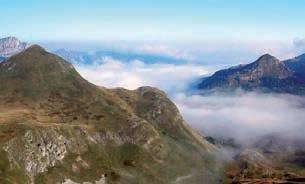
More important mammals encountered in the Park - (Monograph):
Chamois (Rupicarpa rupicarpa), roe-deer (Carpeolus carpeolus), wild boar (Sus scrofa), bear (Ursus arctos), wolf (Canis lupus), fox (Vulpes vulpes), badger (Meles meles), stone marten (Martes foina), pine marten (Martes Martes), weasel (Mustella nivalis), stoat (Mustella erminea), mink (Mustella luteola), squirrel (Sciurus vulgaris), rabbit (Lepus europaeus), dormouse (Glis glis), otter (Lutra lutra), hedgehog (Aeririnaceus europaeus), maul (Talpa europae). e rare and almost extinct wildgame species include: wild cat (Felis sylvestris), lynx (Lynx lynx) and Spalax sp.
Birds:
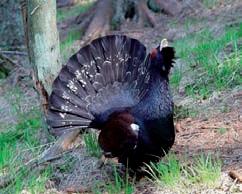
During elaboration of the Park’s management plan (March through September 2002), 114 bird species were registered, but if monitoring expeditions were conducted all year round, the complete list of bird species would probably range between 135 and 150. Of the 114 observed species, 61 nest and live in the park, 32 species are only found in the park during summer, where they also nest, 16 are migratory species that transit the area in autumn and spring on their way to the nesting sites up north, while 5 bird species frequent the park only in winter. e Park’s bird fund boasts even 9 woodpecker subspecies, which makes 90% of the entire bird family in Europe and speaks about the diverse environmental potential that stands on disposal of the woodpeckers in the Park’s forests.
NATURAL HERITAGE
General (Strict) Nature Reserve Perućica Virgin Forest and Alpine Reserve
is virgin-forest and the reserve of forest, alpine and grassland vegetation includes the following most important species: beech, spruce, r, sycamore, alpine ash, juniper, Drzpis linneana, Silene balcanika, Aubretia croatica, Saxifraga prenja, creeping willow (Salix serpillifolia) and Daphne malzana, as well as a number of other endemic and rare plants. e reserve of alpine vegetation of Volujak – It comprises the summits of Mt Volujak (Studenac, Vlasulja, Badanj) with the communities of Elzna mzosuroides, Potentilla clusiana and others. e strict-control reserve of Perućica and Priboj – comprises the remaining part of Perućica’s special-protection reserve (the catchment of the Perućica creek below the Skakavac waterfall) and the protective belt encircling the entire reserve. is reserve includes the
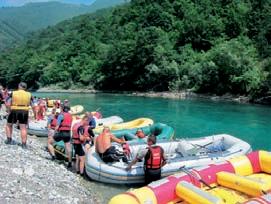
forest vegetation of black pine, beech, hop hornbeam, black ash and other thermophile herb species. e strict-control reserve of Vratar and Jabučke Stijene - is is a geo-morphological and geological reserve and a reserve of the forest and other types of vegetation. e purpose of its protection is to preserve steep calcareous cli s overgrown with black pine.
Strict control reserve of Javorak and Ljubin Grob - A reserve for the protection of the upper zone of woods and pastures on Mt Zelengora (Monograph).
One-day trip suggestions:
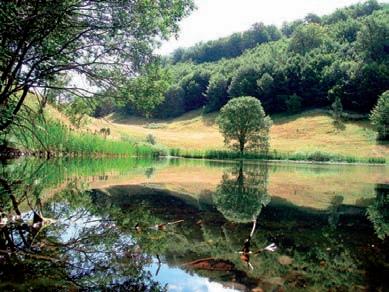

If you have only one day on disposal, you can spend it in Tjentište, relaxing on the terrace of Jezero restaurant or Mladost hotel and enjoying in the view of Mt Vučevo or of the distant hilltops of Mt Volujak. Nevertheless, we advise you to make the most of your time by visiting one of the recommended sites. From Tjentište to Dragoš Saddle (10km) leads a good macadam road. From the parking area on Dragoš Saddle, a hundred meter long path will take you to Vidikovac (Viewing point). e breathtaking view of a profound basin, overgrown with lush vegetation and almost completely inaccessible, opens before your eyes. In the heart of this place of awe-inspiring and almost primal beauty, roars Skakavac waterfall, plunging into a 70 m deep chasm below.
On the opposite side of this steep valley, rise the steep cli s of Mt Volujak. On your le is Mt Maglić, the tallest peak of Bosnia and Herzegovina, and on the right, over the Canyon of Sutjeska River, lurk the hilltops of Mt Zelengora. What a memorable view! If you have the time, continue along this path for another 8 km to Prijevor. It will certainly be worth the while! e path leads to Vučevo and winds to the le , while we take a turn to the right along the footpath that plunges into a dense wood and suddenly reappears on the plateau below Mt Maglić. is is Prijevor! You nd yourself on the elevation of almost 1.700 m above sea level, under the towering Maglić, and an entire range of hilltops in front of you, from Trovački Durmitor, Studenac and Badanj on Mt Volujak to the heights of Mt Zelengora on the horizon far away. In summer months, you can stop by one of the mountain cabins of on Prijevor and feast on homemade cheese, milk cream and freshly baked bread.
Tjentište - Donje Bare Lake (20km)
e path leads via Krekovi (Sava Kovačević’s grave) and Milinklade, descends down the exotic canyon of Hrčavka Rivulet and climbs back to Donje Bare on almost 1,500 m of sea altitude. You can stroll around the lake or walk along a beautiful path to the Borići viewing point that overlooks the Sutjeska canyon or you can proceed to the lake of Gornje Bare not far away.

Naturally, it would be best if you stayed a few days more and, in consultation with the park’s employees, spend memorable vacations.
School in Nature
e awareness about an o en lethal in uence of man on nature, the need for the nature protection and the continuous education of the young people about this subject have led to the organization of a school in nature. Children will best understand the natural processes, their interrelation and complexity, as well as their own role in the protection of nature by spending some time in the nature with their teachers. erefore, Sutjeska National Park is an ideal ambience for such “school in the open.” Children can learn about animal and plant wildlife in the classroom and then attempt to recognize the same life forms in their natural habitats in the open with the help of their teachers and professional guides. In addition, it is possible to hold a geography class in the open (orientation in the nature etc.,) a history class (tour of the cultural and historic monuments, village farms, mountain cabins of cattle-breeders etc.), physical education and an arts class etc. Such program could be enriched by eld trips, documentary screenings, sports games, creative workshops and other activities.
Camping
For decades now, camping has been a popular way of outdoors relaxation and recreation in the Park. e memory of the humming Sutjeska River, mingled with the sounds of the forest in an early morning, or the sound of the wind blowing through your tent near a lake, bringing burred voices from nearby pastures, are deeply relaxing and unforgettable. Camping in the open can help us to regain the feeling of a long-lost freedom, reconnect with our true inner-self and restore the harmony with the nature and other human beings. Camping in the Park is allowed at speci cally designated places and upon permission from the management of the Park. ere is an organized camp in Tjentište, whereas the most frequent camping sites are Orlovačko Lake and Suva Gora (Mt Vučevo).

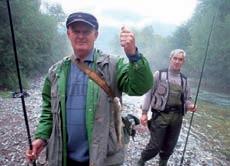

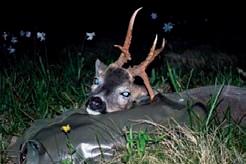
CULTURAL AND HISTORIC HERITAGE
Numerous material remains, written sources and monuments from ancient and more recent past all speak about man’s presence in this area since prehistoric times as a testament of the tumultuous past of this region. e climate and other characteristics of this mountain area have shaped the way of life and activities of its population. Cattle-breeding has been the main economic activity in the area since prehistoric times and cattle-grazing in the mountain during summer months is a tradition that has survived to this day. “Katuns” or mountain cabins of the cattle-breeders were originally connected with the Vlachos, the indigenous population of the Balkans.
Over time, the term “Vlachos” has become a synonym for cattle-breeders. e term “katun” has a twofold meaning. Initially, it referred to a group of people that consisted of several families or households that gathered around one chief or leader under whose leadership they carried out their obligations towards the master whose subjects they were. On the other hand, the word “katun” denotes a settlement in which the group lived. e size of katuns varied from 10 to 150 households, as recorded in title deeds of old monasteries from the time of Nemanjić Dynasty. Mountain cattle-breeding has been practiced in the area of the Park by the Illyrians, Vlachos and Slavs since ancient times. Numerous place-names, ancient methods of milk processing and cattle routes have survived to this day.
Due to its con guration, sea altitude, geological, climatic and other characteristics, the area is suitable for cattle-breeding in katuns. It is only understandable that, driven by draught, the inhabitants of the region of Hum (Stolac, Ljubinje, Trebinje and Čapljina) and Rudine (Bileća) in Herzegovina were forced to look for more suitable places for cattle-grazing. For ages, the cattle moved along the same routes to mountain pastures. When asked how long they had been taking their cattle to the mountain, the inhabitants of Hum and Rudine would reply “ is has been our mountain since ever. is is the place where my great-great grandfather, my great grandfather, my grandfather and my father all used to bring their cattle to and so I am now!”
Prior to the WW II, in the wider area of today’s national park, about 150,000 of small cattle were kept during summer months. e Katuns that were especially suitable for cattle-grazing were those on Mt Zelengora due to the abundance of grass and a large number of springs. Today, there are only several active katuns on Zelengora, like the one on Prijevor right below Mt Maglić. e oldest elements of material and spiritual culture of this region can be found at this place. In the ancient Roman time, this was an important transit area, just as it was during the Middle Ages and the Turkish time and just as it is today. Tjentište was named a er the Latin word “tentorium”– or a tent, probably because the settlement developed from a caravan stopping place, at which travelers stayed in tents at night. In the Middle Ages, the Bosnian rulers did their best to keep this area under their control because of its strategic position on an important caravan road from Dubrovnik. Today, the Park lies on the territory of the three former medieval parishes: Sutjeska (Sutiescha), Drinavljva (Drinazeua) and Zagorje (Xagorie) and their administrative centers, the old towns of Vratar, Todjevac and Veletin. ere are many written records from this time, most of them are kept in the old Dubrovnik archives. e remains of the medieval fortresses of Vratar and Tođevac, the medieval churches on Prijeđel and Budoš and the medieval tombstones (stećci) have been preserved on several locations in the Park.
In more recent history, this area was the site of one of the most di cult and bloodiest battle in WWII between the partisan troops on one and the joint German-Italian and quisling troops on the other side. e Battle on the Sutjeska River (the 5th O ensive or “Operation Schwarz”) lasted from 15th May to 15th June in the areas of Montenegro, east Herzegovina and east Bosnia, while the nal deadliest con icts took place on the Sutjeska River and the surrounding mountains. During one month of heavy ghting more than 7,500 partisans from the Main Battle Group of the People’s Liberation Army of Yugoslavia were killed, among them a large number of wounded soldiers from the Central Hospital that moved along with the said partisan battle group.
In memory of this great battle, a memorial complex was built in Tjentište. Its central piece is a magni cent monument, the work of academic sculptor Miodrag Živković, and the Sutjeska Battle Memorial House, an architectural masterpiece by the then young Belgrade architect Ranko Radović.
On the territory of the Park there are a number of smaller monuments that commemorate the main events and gures from this battle. Miloš Je ić: e Multi-layered Paths of Ranko Radović, Gra kom Belgrade, 1995.
“ Do I have to tell you that the Sutjeska Battle Memorial House is composed of a number of roofs, traditional ones, but arranged in quite a contemporary manner, somewhere between the pyramids and their archaic stability and the local regional wooden village barns and cottages with four-sided roofs. is house doesn’t have a wall or any walls at all, but rather, the ROOF is a slanted wall that grows from the ground, as if weighed down by snow or a burden, and yet, the wall is a slanted roof both here and there. Didn’t we speak about the duality and the simultaneous presence of only seemingly opposed voices? On the outside , the house looks perfect (who can compete with Volujak and Gornje Bare?) And on the inside, this same house looks enormous. At its summit, the house is 12 meters or the entire four stories tall and yet it looks like one dainty “ground- oor.”
Finally, I have built a house in harmony with nature. e house is part of the nature and lies in the Valley, as if it was some natural relief, but at the same time it is a sign of the men and their village community from before the war, a dozen meters away from the Memorial House, at the spot where village houses were destroyed in a real-life re during war. In the sunset, the sun shone through the clouds, at the end of its strength, but it seemed to me that my roofs were cli s, while the massive grey mountain blocks in the distance were enormous roofs that ripped through the sky.”
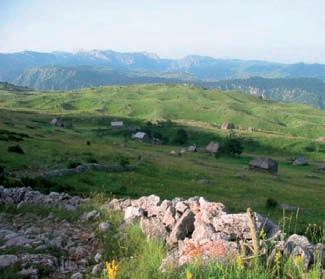

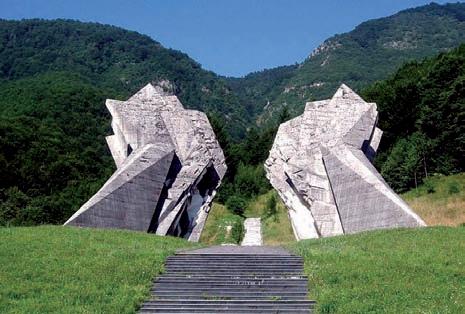

TOURISM IN HUTOVO BLATO NATURE PARK
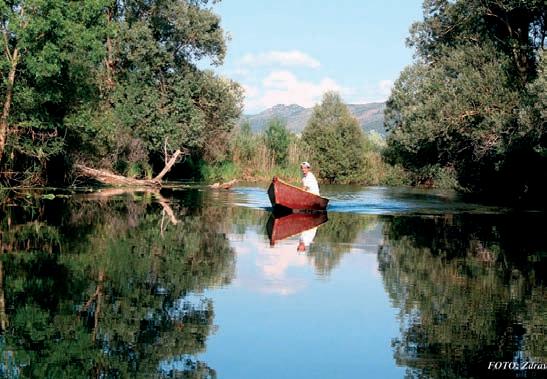
Hutovo Blato gained on international importance a er it was declared a nature park and included in the Ramsar list of important wetland habitats of the world, as well as in the UNESCO list of world heritage. As a wetland area of international importance, Hutovo Blato should focus its tourist o er on those tourists who do not violate the basic concept of nature protection.
According to data provided by the WTO (World Tourism Association), the reputation of a region in tourist circles will increase and its tourist demand rise by 20 to 30% in comparison to destinations that are not classi ed by internationally recognized category for nature protection.
If we look at the trends of global tourist demand, it is apparent that more and more foreign and domestic tourists are pursuing active holidays in nature, which implies di erent activities from hiking, climbing, potholing, photo-safari, ra ing, canoe safari, horseback riding, cycling and other activities based on physical exercise. According to the available data, the number of tourists in European countries who go a er tourist destinations that o er active rest is on the rise.
As a protected nature site, Hutovo Blato is the kind of tourist destination which, in addition to its natural assets, o ers programs that can satisfy the needs of the said type of tourists. e Park’s tourist o er targets school and college students, nature lovers (biologists, ecologists, ornithologists, spelunkers, etc.), shing enthusiasts, athletes and sport teams and recreationalists who will use Hutovo Blato as a starting point for the exploration of other destinations in the area (Mostar, Neum, Međugorje, Sarajevo). e Park’s natural assets are still the main motive of tourist visits to Hutovo Blato and the Neretva delta. A sustainable use and protection of natural resources, as well as development of sustainable models of tourist o er are the concepts the Park has adopted as a guarantee for the development of eco-tourism in this area.
Return to nature, organic food and viable use of natural resources is a global movement that in uences eco-tourism. Together with sustainable development, eco-tourism means economic and social growth harmonized with the eco-system and therefore, viable in a long term.
Eco-tourism can partly impact the use of resources in order to satisfy the economic and social needs and to protect the cultural, environmental and biological di-

versity. is is exactly why this model of tourism should be used in a region like this in which more e orts should be invested into the protection of wetland- and water eco-systems of the entire Neretva delta, more speci cally, in the conservation of landscape, air and soils, which brings us to the next point about eco-tourism: a) Eco-tourism actively promotes environmental responsibility and has immediate bene cial impacts on the environment; b) Eco-tourism is restricted by the so-called package o ers of the big tour operators because eco-tourism enthusiasts avoid big groups and traditional forms of tourism; c) Prices are relatively high and the number of tourists who demand of eco-services relatively small;
Natural qualities, including climate, hydrology, relief, ora and fauna, as well as the well-preserved landscape of the Neretva river-basin, Hutovo Blato including, are preconditions for the development of eco-tourism in this area. anks to support from local population, institutionalized approach to nature protection and state subsidies, eco-tourism can live to its full potential.
Current situation with Park’s tourist o er
e following tourist attractions are on o er in the Park:
• canoe safari
e main touristic attraction in the Park is photo safari. It is attended by tourists of all age groups and from various countries. According to available data, Hutovo Blato was visited by 700 guests in 2001, 37,460 guests in 2003, 5,051 guests in 2004, while this number in 2010-2011 exceeded 10,000. e analysis of guest structure shows a signi cant shi in the number of school visits, while the increase in the number of foreign guests is insigni cant. e majority of foreign visitors to the Park arrived on a one day trip organized by tourist agency Atlas from Dubrovnik, while domestic guests mostly arrived on their own. School students visit the Park on organized one-day trips or as part of school excursions passing through, on their way to other tourist destinations.
• Sports shing
By organizing the 27th World Club Contest in sports shing in 2006, the Park has started to o er this speci c type of tourist o er to domestic and international tourists on a more serious basis. Sports shing enthusiasts from sports shing societies “Bjelave” Čapljina and “Bregava” Stolac constitute a sound basis for development of this type of tourist programs.


